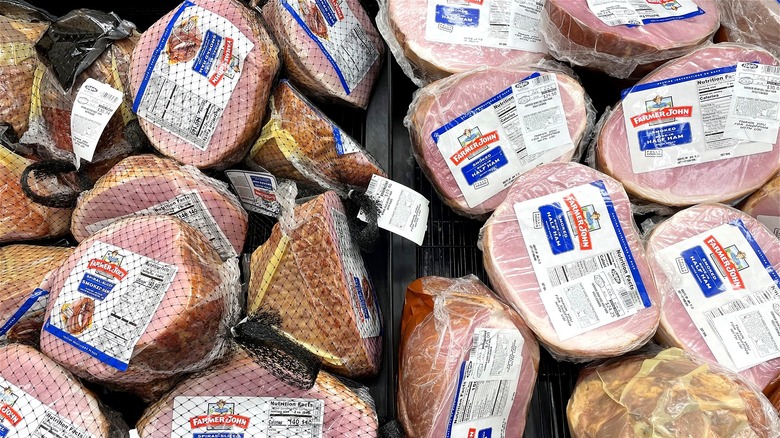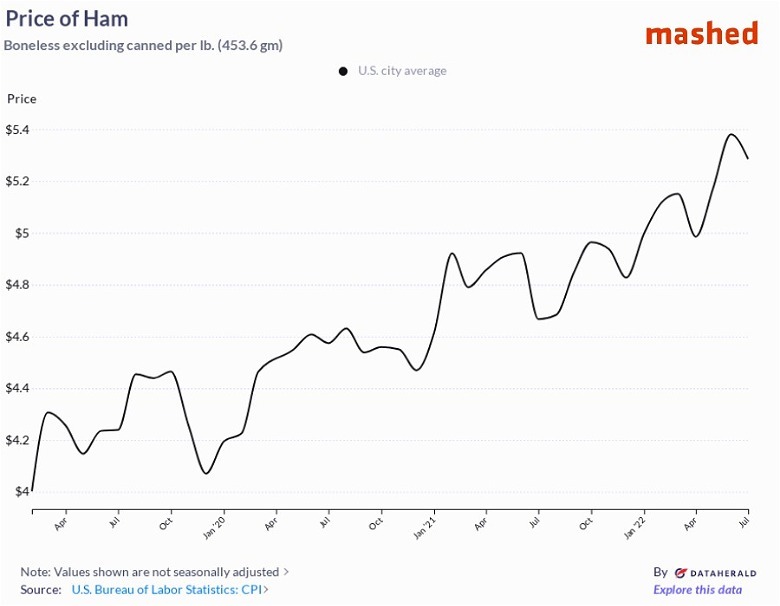Ham's Inflation Rates Will Give You Sticker Shock
Having a bounty of fresh and high-quality food to choose from each week is one thing consumers may have stopped taking for granted in 2022. With this year's steady rise in food prices and a record inflation rate of 8.5%, more people are having to adjust their grocery budgets.
Not only has the cost of coffee increased during inflation, but U.S. grocery stores have also seen eyebrow-raising price hikes on weekly staples like eggs and ground beef. Additionally, according to a study cited by Food Business News, 72% of shoppers are cutting their spending on meat, which has seen particularly notable price increases in recent months. Per the Bureau of Labor Statistics (via CNBC), the overall price of meat rose 14.8% in 2020 alone. Shoppers may already be painfully aware that beef and chicken costs have surged in the last year, but what about other popular meats? Has ham also fallen victim to the wrath of inflation?
The cost of ham has risen 30% in the last three years
Unfortunately, ham prices have not dodged the rising food cost epidemic. According to the Bureau of Labor Statistics, ham has been undergoing a steady price increase since the beginning of 2019. In December of that year, the cost of boneless ham per pound (based on a national city average) was $4.07, climbing to $4.83 by the same month of 2021. In July of this year, the cost rose to $5.29 per pound — an overall increase of about 30% in the last three years.
As a Kroger representative explained to Insider, shoppers have been increasingly avoiding high beef prices by opting for pork instead. Still, they may not be saving as much money as they think. Per OpenMarkets, the cost of pork production has risen 23.9% over the last year, causing farmers to be wary when considering herd expansion. If demand continues to rise, that could mean higher ham costs in the coming months. Considering the numbers, consumers hoping for lower grocery bills — on ham and other foods — may want to shop with a strategy being embraced by about 80% of U.S. adults these days: ditching the name brand products in favor of cheaper store brand options.

